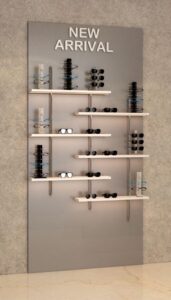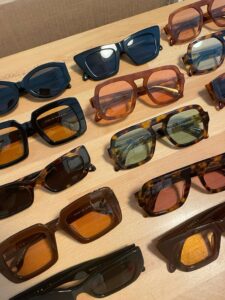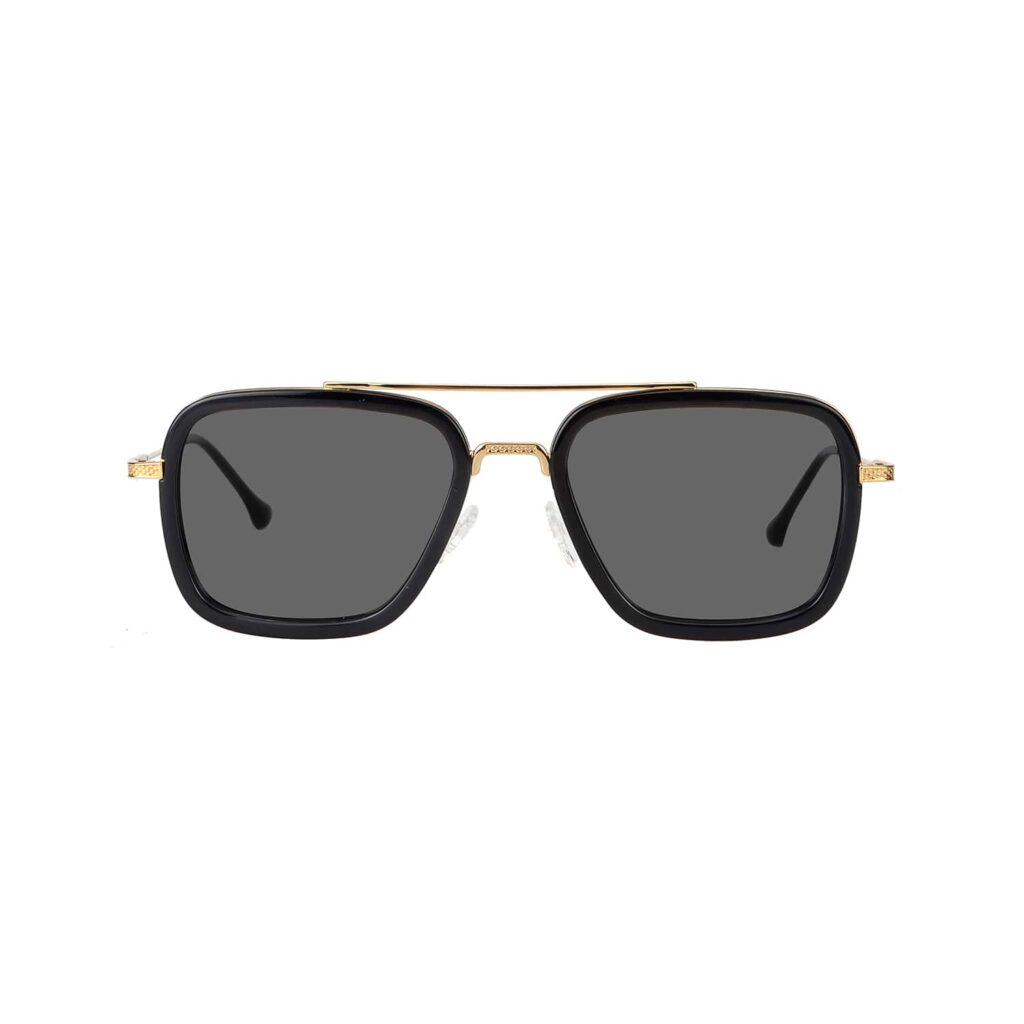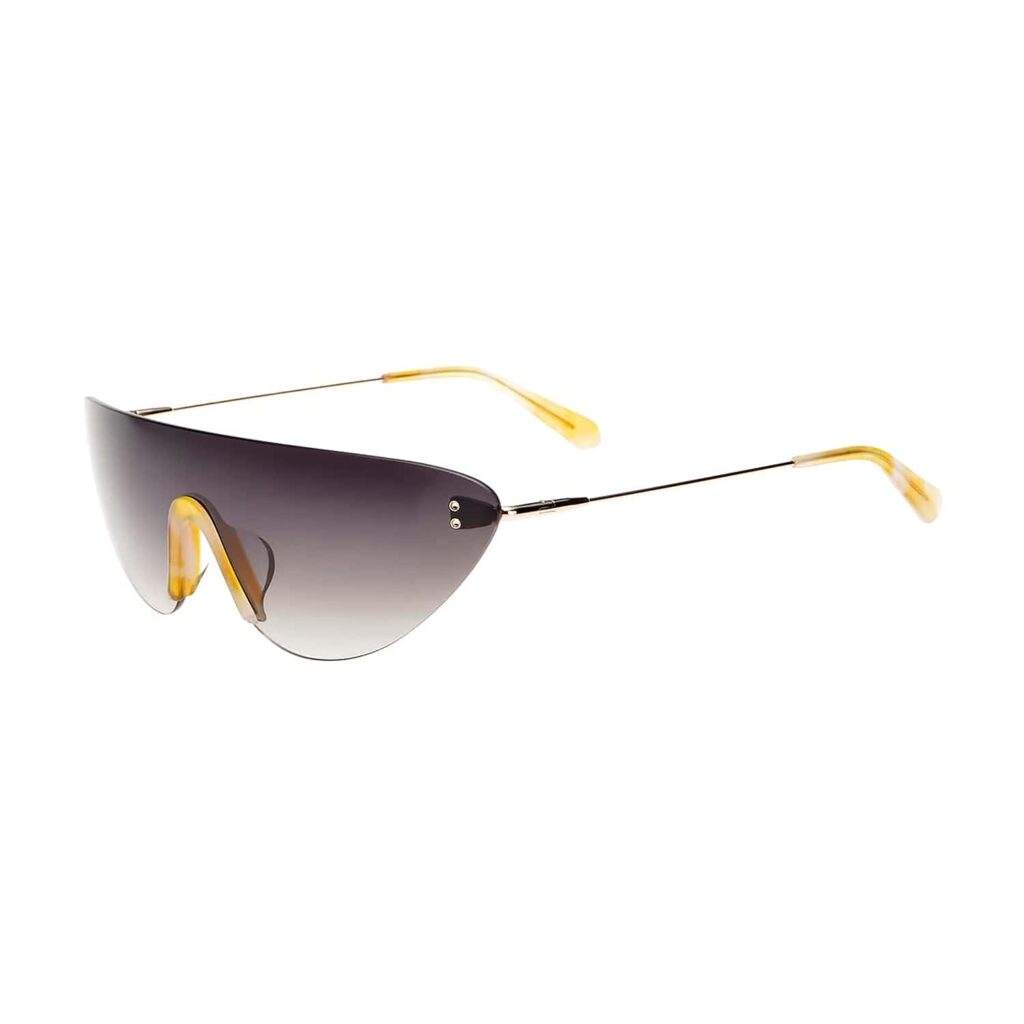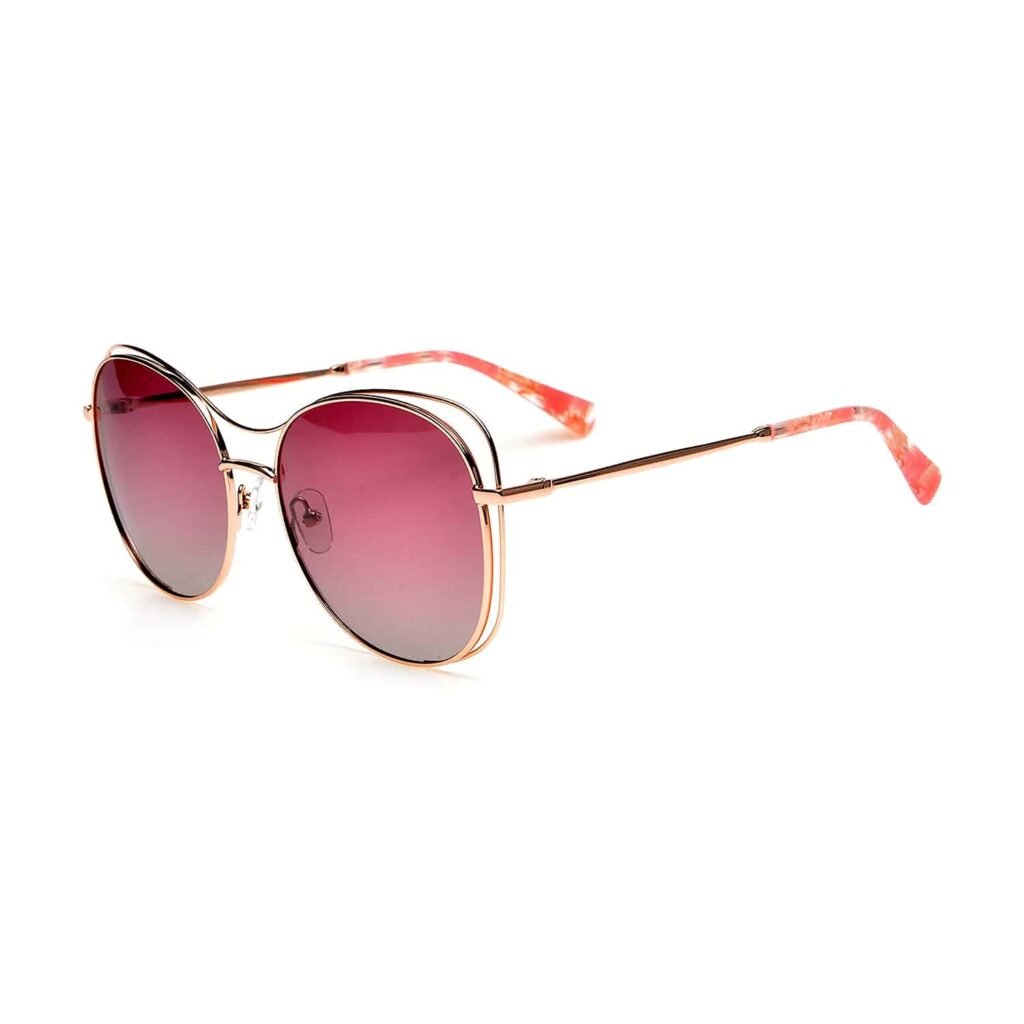Sustainable Eyewear Trends Introduction
As we witness a growing awareness of environmental issues, the concept of sustainability has become crucial in various industries, including eyewear manufacturing. Sustainable eyewear trends are reshaping the way brands approach design, materials, and production processes. In an era where consumers are increasingly seeking eco-friendly products, manufacturers are responding by adopting innovative practices that prioritize environmental responsibility.
At Joysee Eyewear, we understand the importance of sustainability in our operations. By embracing eco-friendly materials and advanced manufacturing technologies, we aim to set a standard in the eyewear industry. This article will delve into the significance of sustainable practices in eyewear production, explore various eco-friendly materials, highlight innovations in manufacturing, and discuss market trends driving the demand for sustainable eyewear.
Join us as we explore how the eyewear industry is evolving to meet the needs of environmentally conscious consumers while maintaining quality and style. Together, we can make a positive impact on the planet, one pair of glasses at a time.

1. The Concept of Sustainable Eyewear
Understanding the ECO Concept
In today’s world, the ECO (ecologically friendly) concept is becoming increasingly important. It emphasizes the need to reduce environmental impact through the use of eco-friendly materials and sustainable practices. In the eyewear manufacturing industry, adopting sustainable practices not only helps protect the environment but also enhances brand image, attracting consumers who are increasingly conscious of sustainability. At Joysee Eyewear, we embrace these values by integrating sustainable practices into our production processes.

Different Forms of Sustainable Materials
Recyclable Materials
Materials such as aluminum and plastics can be reused at the end of their lifecycle, minimizing waste and reducing environmental impact.Biodegradable Materials
Certain bioplastics can decompose in natural environments, lessening the burden on landfills and contributing to a cleaner ecosystem.Renewable Materials
Using renewable resources like bamboo and wood, which grow quickly and can be sustainably harvested, is crucial for maintaining ecological balance.Non-toxic Materials
Ensuring that harmful chemicals are not used during production protects both consumer health and the environment.Recycled Materials
Utilizing recycled plastics and metals decreases the need for new resources, lowering production costs and promoting sustainability.Bio-based Materials
Materials derived from plant sources reduce reliance on petroleum-based products, thus decreasing carbon footprints and promoting environmental sustainability.Sustainable Synthetic Materials
These are produced through sustainable chemical processes that utilize renewable energy, significantly lowering overall carbon emissions.Circular Economy Materials
Extracting from waste materials at the end of a product’s life, these materials are reprocessed and reused in production, emphasizing resource circularity.Low-Carbon Materials
New composite materials that generate lower carbon emissions during production help mitigate the environmental impact of the manufacturing process.Smart Materials
Featuring properties that allow for adjustment, such as temperature sensitivity and color-changing capabilities, smart materials can enhance product efficiency and longevity.Natural Fiber Materials
Examples include hemp, linen, and organic cotton, which are not only biodegradable but also consume fewer resources during production.Eco-friendly Coatings and Adhesives
By utilizing environmentally friendly coatings and adhesives, manufacturers can reduce the use of harmful chemicals, thus improving the eco-friendliness of their products.

By understanding and implementing these various types of sustainable materials, eyewear manufacturers can not only promote the industry’s sustainable development but also stand out in a competitive market, attracting environmentally conscious customers. At Joysee Eyewear, we are committed to integrating these sustainable practices into our manufacturing processes, ensuring that our products not only meet high quality standards but also contribute positively to the environment.
2. Innovative Technologies in Sustainable Eyewear Manufacturing
a. 3D Printing Technology
3D printing technology is revolutionizing the eyewear manufacturing process. By utilizing 3D printing, manufacturers can significantly reduce material waste, as this technology allows for precise calculations of material usage in designs. Traditional manufacturing methods often involve extensive cutting and trimming, leading to substantial waste. In contrast, 3D printing builds products layer by layer directly from design specifications, minimizing unnecessary waste. Additionally, 3D printing offers great design flexibility, enabling brands like Joysee Occhiali to create unique and complex eyewear styles that cater to consumer demands for personalized designs.
b. Eco-Friendly Coatings and Treatments
In sustainable eyewear manufacturing, the use of eco-friendly coatings and treatment technologies is essential. These environmentally friendly coatings are typically made from non-toxic materials, ensuring that products do not harm the environment during use and disposal. Non-toxic processing techniques mean that harmful chemicals are not used in production, which not only enhances product safety but also aligns with modern consumers’ concerns for health and environmental protection.
c. Energy Efficiency
Improving energy efficiency is another critical aspect of achieving sustainability. An increasing number of produttori are transitioning to renewable energy sources, such as solar and wind energy, to reduce their carbon footprint. Moreover, the adoption of low-energy production processes is helping eyewear manufacturers decrease their reliance on fossil fuels, creating a more environmentally friendly production system. This shift not only aids in protecting the environment but also allows companies to save costs, enhancing their competitiveness in the market.
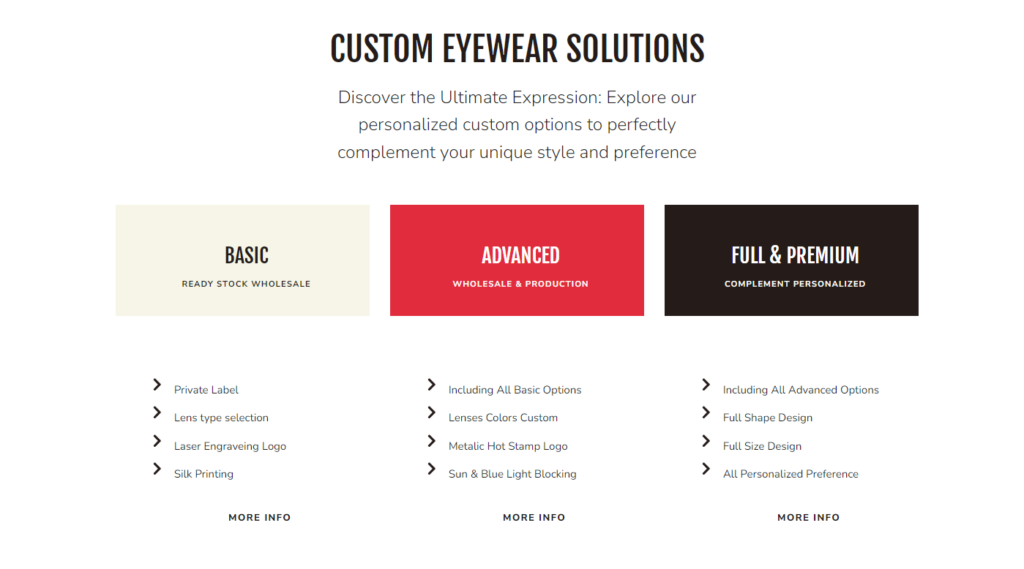
3. Market Demand for Sustainable Eyewear
As awareness of environmental issues rises, consumer interest in sustainable products continues to grow. Research shows that a significant number of consumers are willing to pay a premium for brands that practice sustainability and ethical production. According to market studies, the sustainable eyewear market is expected to experience substantial growth in the coming years, becoming a key trend in the eyewear industry.
Statistics further support this growth trend: for instance, a 2023 survey indicated that over 70% of consumers prioritize products made from eco-friendly materials. This shift not only drives demand for sustainable eyewear but also encourages produttori to focus more on eco-friendly designs and production techniques to meet market expectations. Joysee Occhiali, as a leading eyewear manufacturer, actively responds to this trend by committing to offer high-quality eyewear products that adhere to sustainable standards.

4. Successful Case Studies :Sustainable Eyewear Trends
In the realm of sustainable eyewear manufacturing, several brands have stood out by adopting innovative environmental measures and achieving remarkable results. Here are a few successful examples:
Warby Parker
- Eco-Friendly Measures: Warby Parker utilizes recycled materials in their products and has implemented a “buy a pair, give a pair” program, donating one pair of glasses for every pair sold. This practice not only reduces waste but also enhances the brand’s social responsibility.
- Outcomes: Through this initiative, Warby Parker has donated millions of glasses globally, helping countless individuals with vision impairments.
Maui Jim
- Eco-Friendly Measures: Maui Jim manufactures frames from renewable materials and employs low-energy technologies in their production processes to minimize environmental impact.
- Outcomes: Their commitment to sustainability has garnered consumer recognition, resulting in steady sales growth and increased brand loyalty.
Proof Eyewear
- Eco-Friendly Measures: Proof Eyewear produces glasses using recyclable and renewable materials, such as bamboo and reclaimed aluminum. Additionally, they allocate a portion of their profits to tree planting and environmental projects.
- Outcomes: The brand’s eco-friendly practices have attracted considerable attention, leading to significant sales growth.
5.Sustainable Eyewear Trends Future Outlook
The future of sustainable eyewear manufacturing will likely see more innovation and development directions. As consumer awareness of environmental issues rises, brands will need to further explore the use of eco-friendly materials and low-energy production methods. It is expected that more companies will invest in research and development, focusing on the application of advanced technologies such as 3D printing and smart materials.
Furthermore, collaboration within the industry will become increasingly important. Interaction between produttori and consumers will help drive efforts toward sustainability. Brands should actively encourage consumers to participate in choosing sustainable products, fostering a collective push toward a greener industry.

Types of Sustainable Materials in Eyewear Manufacturing
| Material Type | Descrizione |
|---|---|
| Recyclable Materials | Materials like aluminum and plastics that can be reused after their lifecycle ends. |
| Biodegradable Materials | Bioplastics that decompose naturally, reducing landfill waste. |
| Renewable Materials | Resources like bamboo and wood that can be sustainably harvested. |
| Non-toxic Materials | Materials produced without harmful chemicals, ensuring safety for consumers and the environment. |
| Recycled Materials | Plastics and metals repurposed from previous products, minimizing the need for new resources. |
| Bio-based Materials | Materials derived from plant sources, reducing reliance on petroleum-based products. |
| Sustainable Synthetic | Materials created through sustainable processes that utilize renewable energy. |
| Circular Economy Materials | Materials extracted from waste, reprocessed, and reused, promoting resource circularity. |
| Low-Carbon Materials | Composites produced with lower carbon emissions during manufacturing. |
| Smart Materials | Materials that change properties based on environmental conditions, enhancing product longevity. |
| Natural Fiber Materials | Biodegradable materials such as hemp and organic cotton, which consume fewer resources. |
| Eco-friendly Coatings | Coatings and adhesives that reduce harmful chemical usage, improving overall sustainability. |

Sustainable Eyewear Trends Conclusion
Sustainable eyewear manufacturing is crucial for environmental protection and presents new opportunities for brand building. An increasing number of brands and consumers are prioritizing eco-friendliness, driving the sustainable development of the industry. We encourage more brands to take proactive measures, emphasizing environmental responsibility and social consciousness.
If you’re interested in learning more about sustainable eyewear products and options, feel free to contact Joysee Eyewear. We are happy to provide further information and assistance.
- Produttori di occhiali: cosa cercare nel proprio partner
- 1. Opzioni innovative di produzione di occhiali personalizzati
- 2. Garanzia di qualità dei produttori di occhiali: Standard, test
- 3. Vantaggi della collaborazione con i produttori di occhiali cinesi
- 4. Tendenze dell'occhiale sostenibile: Pratiche di produzione eco-compatibili
- 5.Scegliere il produttore di occhiali per il vostro marchio
- 6. Processo di produzione degli occhiali: Come vengono prodotti gli occhiali
- 7. Tendenze tecnologiche nella produzione di occhiali
Allen Lin
Posizione: Proprietario
Azienda: Joysee Occhiali
E-mail: allen.lin@joysee-eyewear.com
WhatsApp: +8613456050627
Sito web: www.joysee-eyewear.com

